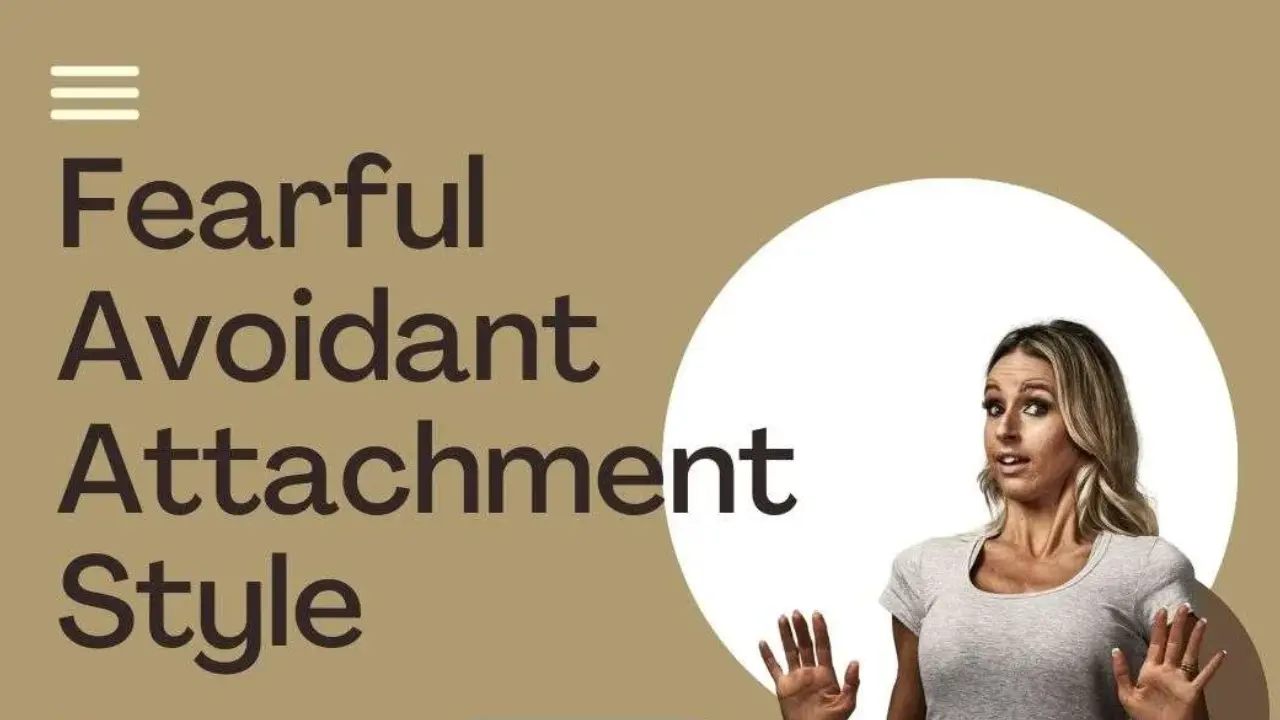Fearful avoidant attachment style is one of psychology’s four main attachment styles. It affects individuals’ ability to form and maintain healthy relationships, often leading to a fear of intimacy and emotional closeness. This article will explore the fearful avoidant attachment style’s characteristics, origins, and effects. We will also discuss coping strategies for individuals with this attachment style and offer guidance on building relationships with afraid avoidant individuals.
1. Introduction to Fearful Avoidant Attachment Style
Attachment theory, developed by psychologist John Bowlby, suggests that early experiences with caregivers shape individuals’ attachment styles. A conflicting desire for emotional connection and independence characterizes fearful avoidant attachment. Individuals with this attachment style often fear rejection and abandonment, leading them to avoid deep emotional intimacy.
2. Understanding Attachment Styles
Attachment styles are patterns of behavior and beliefs regarding relationships that develop in early childhood. These styles impact how individuals perceive and interact with others throughout their lives. The four main attachment styles are secure, anxious-preoccupied, dismissive-avoidant, and fearful-avoidant.
- Overview of attachment theory: Attachment theory posits that early experiences with caregivers shape individuals’ expectations and beliefs about relationships.
- Different types of attachment styles: In addition to fearful avoidant, there are three other main attachment styles: secure, anxious-preoccupied, and dismissive-avoidant.
3. Characteristics of the Fearful Avoidant Attachment Style
Fearful avoidant individuals exhibit specific characteristics and behaviors that are distinct from other attachment styles. These characteristics include:
- Avoidance of intimacy and emotional closeness: Fearful avoidant individuals often feel uncomfortable with emotional intimacy and may distance themselves from others to avoid potential rejection or hurt.
- Fear of rejection and abandonment: Past experiences may have led to a fear of rejection and abandonment, making it difficult for individuals to trust and fully engage in relationships.
- Conflicting desires for connection and independence: Fearful avoidant individuals experience a constant struggle between the desire for emotional connection and the fear of being overwhelmed or controlled.
4. Origins and Development of Fearful Avoidant Attachment
The development of the fearful avoidant attachment style can be traced back to early childhood experiences and the relationships individuals had with their primary caregivers. Some key factors include:
- Childhood experiences and attachment figures: Negative experiences with caregivers, such as inconsistency or abuse, can contribute to the development of fearful avoidant attachment.
- Traumatic events and their impact on attachment style: Traumatic events, such as loss or betrayal, can exacerbate fear and avoidance behaviors, further solidifying the fearful avoidant attachment style.
5. Signs and Behaviors of Fearful Avoidant Individuals
Recognizing the signs and behaviors associated with a fearful avoidant attachment style can help understand and support individuals who exhibit these patterns. Common symptoms and behaviors include:
- Difficulty forming and maintaining relationships: Fearful avoidant individuals may struggle to establish and sustain healthy relationships due to their fear of intimacy and vulnerability.
- Emotional unpredictability and mixed signals: These individuals may display conflicting emotions and give mixed signals as they battle between the desire for connection and the fear of getting hurt.
- Fear of vulnerability and emotional expression: Fearful avoidant individuals often find it challenging to express their emotions or be vulnerable with others, as it can feel overwhelming or unsafe.
6. Effects of Fearful Avoidant Attachment in Relationships
The fearful-avoidant attachment style can have significant impacts on relationships, both romantic and platonic. Some common effects include:
- Challenges in establishing trust and security: Fearful avoidant individuals may struggle to trust others and often question their partner’s motives, leading to difficulties in establishing a secure and stable relationship.
- Intimacy issues and emotional distancing: Due to their fear of emotional closeness, individuals with a fearful avoidant attachment style may create an emotional distance as a defense mechanism, hindering the development of deep emotional connections.
- Impact on communication and conflict resolution: Fearful avoidant individuals may struggle with effective communication and conflict resolution, as they often have difficulty expressing their needs and emotions openly.
7. Coping Strategies for Fearful Avoidant Individuals
While overcoming a fearful avoidant attachment style can be challenging, there are effective coping strategies that can help individuals develop healthier relationship patterns. These strategies include:
- Self-reflection and understanding attachment patterns: Increasing self-awareness and understanding one’s attachment patterns can be a crucial first step towards positive change.
- Seeking therapy and professional support: Therapy can provide valuable guidance and support in addressing underlying issues and developing healthier relationship skills.
- Developing secure attachment through personal growth: Engaging in personal growth activities, such as self-care, self-compassion, and cultivating safe relationships outside of romantic partnerships, can contribute to developing a more secure attachment style.
8. Building Relationships with Fearful Avoidant Individuals
Building relationships with fearful avoidant individuals requires patience, understanding, and specific approaches. Consider the following strategies:
- Creating a safe and non-judgmental environment: Foster a safe space where the individual feels accepted and understood without judgment.
- Patience, empathy, and understanding: It may take time for fearful avoidant individuals to trust and open up. Practice kindness and be understanding of their fears and anxieties.
- Encouraging open communication and vulnerability: Encourage open and honest communication, emphasizing the importance of openness and emotional expression in building a deeper connection.
9. Overcoming Fearful Avoidant Patterns
Overcoming fearful avoidant patterns requires deliberate efforts and a commitment to personal growth. Here are some strategies to consider:
- Challenging negative beliefs and fears: Identify and challenge negative beliefs and fears associated with intimacy and relationships. Replace them with more positive and realistic thoughts.
- Gradual exposure to intimacy and emotional connection: Start with small steps towards intimacy and gradually increase emotional closeness, allowing oneself to become more comfortable with vulnerability.
- Building self-esteem and self-compassion: Cultivate self-esteem and self-compassion to counteract the fear of rejection and abandonment, promoting a healthier self-image.
10. Conclusion
Fearful avoidant attachment style can significantly impact individuals’ ability to form and maintain healthy relationships. However, self-reflection, professional support, and the right strategies can overcome the challenges associated with this attachment style. By fostering understanding, patience, and open communication, both fearful avoidant individuals and their loved ones can work towards developing more secure and fulfilling relationships.

